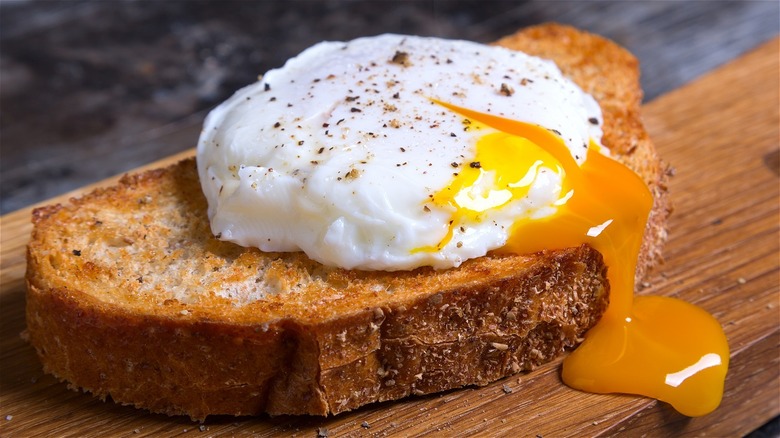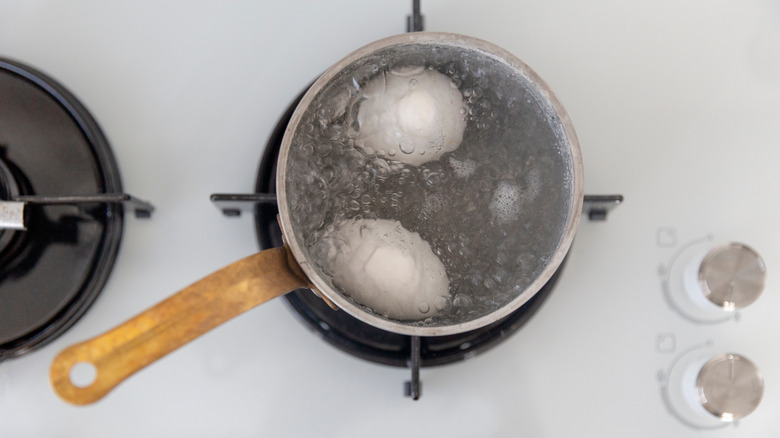Thanks To Vinegar, Poaching Eggs In Bulk Isn't Difficult
Ah, the poached egg. For something seemingly simple, it is deceptively complicated to perfect. Many times you're left with a frayed, sprawling egg white when you really want a solid egg white pod around your yolk. Making a poached egg is difficult enough, so making multiple poached eggs at once can feel near-impossible. But with a generous splash of vinegar, it's easier than ever.
To make a poached egg, you technically just need water and a cracked egg. But many chefs also include a little white vinegar in their simmering water, especially when they are making several at a time. That is because when you're just using water, the egg whites tend to sprawl out. Egg whites are almost entirely water themselves, so picture adding another liquid to the steaming water — it would leach out and blend in immediately. This will leave you with a thin, unprotected poached yolk.
Ensuring you don't have wandering whites on your poached eggs is especially important when you're making them en masse because if the egg whites do leak out, they can connect with each other and become attached, which makes for a messy presentation. Vinegar works to basically cure and solidify the protein in the egg whites, which will prevent them from feathering out.
One ingredient, two methods
White distilled vinegar is best because while it's highly acidic, its flavor is fairly neutral, unlike white wine or apple cider vinegar. And because it's colorless, it won't give you a funky-colored egg like balsamic or red wine vinegar would.
There are two solid methods for batch-cooking eggs with vinegar: one uses vinegar to prep the eggs, and the other uses it in the cooking water. The prep method requires equal parts water and vinegar in a large mixing bowl, to which you will add all of your raw eggs. After letting the eggs soak in this mixture for several minutes, you'll be able to visibly see the semi-set but uncooked egg whites — from there, you just remove the eggs from the mixture with a slotted spoon and cook as normal. This method uses quite a bit of vinegar, so you may notice a more tangy flavor in your eggs, but it's certainly cool and a simple way to get a set protein on your poached eggs.
The other method is more standard: just add two tablespoons of white distilled vinegar to a skillet nearly filled with water. This is the better option if you don't want to be able to taste any of the vinegar, or don't want to wait around for the proteins to set before cooking. But whatever method you choose, white vinegar can make poaching a whole lot easier.

